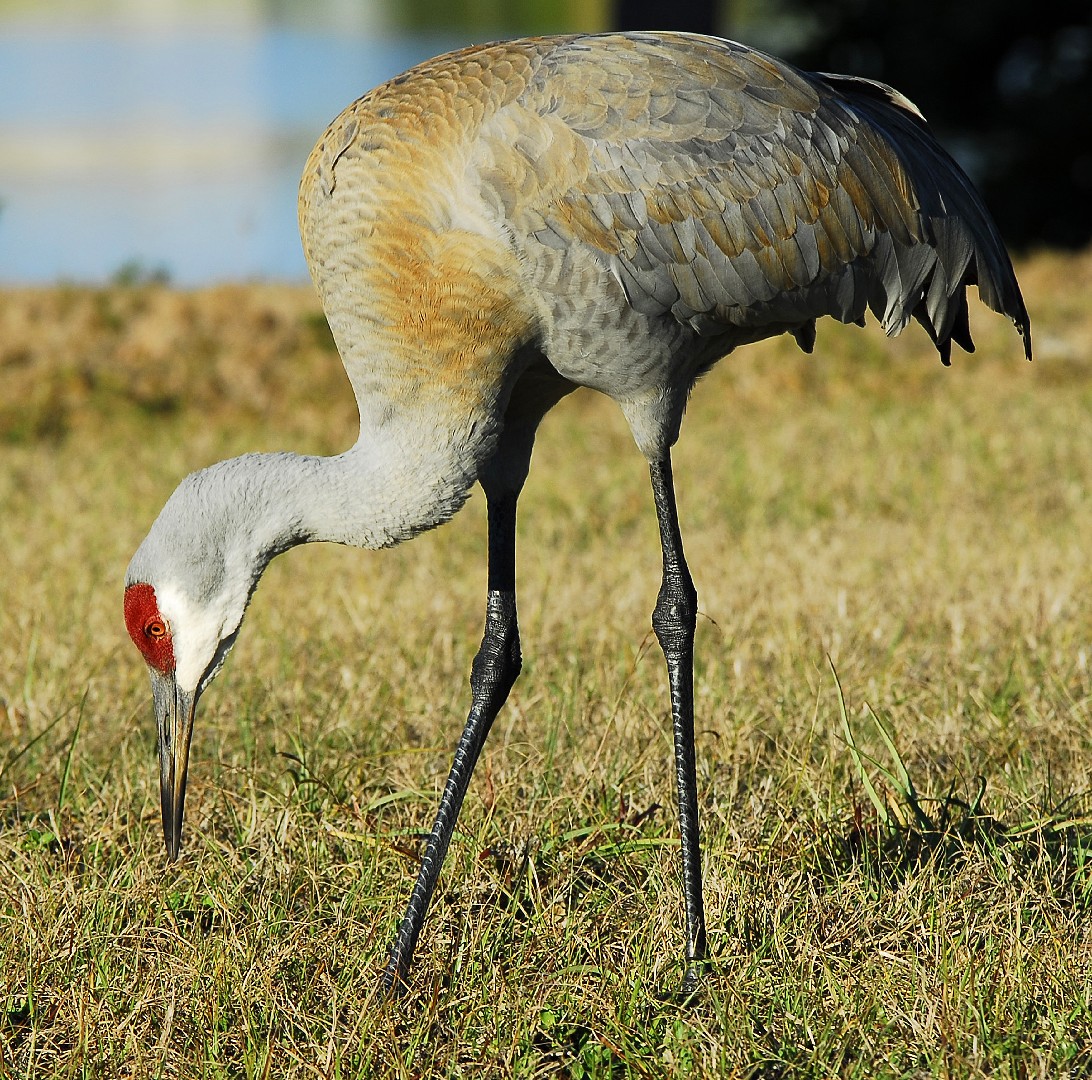Sandhill Crane
A species of Cranes Scientific name : Antigone canadensis Genus : Cranes
Sandhill Crane, A species of Cranes
Botanical name: Antigone canadensis
Genus: Cranes
Content
Description People often ask General Info
 Photo By Andrea Westmoreland , used under CC-BY-SA-2.0 /Cropped and compressed from original
Photo By Andrea Westmoreland , used under CC-BY-SA-2.0 /Cropped and compressed from original Description
The large sandhill Crane is found in open grasslands and wetland ecosystems, usually far away from human civilization. However, during the migratory periods they can be seen feeding on farmland. These birds have many physical cues for socializing and mating. For protection, they may even defend themselves by kicking their feet.
Size
80 - 120 cm
Life Expectancy
21.6 years
Nest Placement
Ground
Clutch Size
1 - 3 eggs
Number of Broods
29 - 32 days
Feeding Habits
Sandhill Crane is omnivorous, foraging on land or in shallow marshes, gleaning from surfaces, and probing with its bill. Its diet consists of seeds, grains, berries, tubers, invertebrates, and small vertebrates including insects, snails, amphibians, nestling birds, small mammals, and occasionally nuts and fruit.
Habitat
Sandhill Crane thrive in diverse open wetlands, such as marshes, swamps, and bogs, alongside prairies and agricultural areas. They favor a combination of wetlands with standing water for breeding and adjacent uplands, including wet meadows and shrub-edged zones. Outside breeding seasons, they adapt to grasslands and pastures, with wintering grounds in temperate regions, roosting by rivers or shallow lakes and foraging in nearby irrigated fields.
Nest Behavior
Sandhill Crane engages in nesting from late winter through spring. Both parents contribute to nest building by gathering vegetation and arranging it on a self-made mound. Egg-laying follows nest construction, and the pair exhibits collaborative parental care, with both members of the mating pair incubating the eggs and later tending to the young.
Nest Characteristics
Sandhill Crane typically constructs nests from cattails, sedges, burr reeds, bulrushes, or grasses, often in standing water or sometimes on dry ground. These nests are sizeable, with dimensions of 30-40 inches in width and 4-6 inches in height, and may be larger when built over water. The nest features a foundation of larger materials topped with a cup-shaped hollow lined with smaller stems or twigs.
Dite type
Omnivorous
People often ask
General Info
Feeding Habits
Bird food type
Sounds
Call
Recording location: United States
Call
Recording location: United States
Call
Recording location: United States
Behavior
Sandhill Crane engage in lifelong partnerships, solidified through elaborate dancing rituals. Daily life consists of foraging for grains and invertebrates, with parental pairs nurturing typically one surviving offspring. They demonstrate strong family bonds, remaining together until juveniles depart the following spring. Migratory movements lead them to form significant communal flocks for roosting and feeding. Sandhill Crane showcase defensive behaviors against predators, employing aerial kicking and ground-based wing-spreading and hissing to protect their young and themselves.
Species Status
In the 20th century, sandhill cranes were generally extirpated east of the Mississippi River. Although sandhill cranes are not considered threatened as a species, the three southernmost subspecies are quite rare. Resident populations, not migratory birds, cannot choose secure breeding habitat. Many subpopulations were destroyed by hunting or habitat change. 